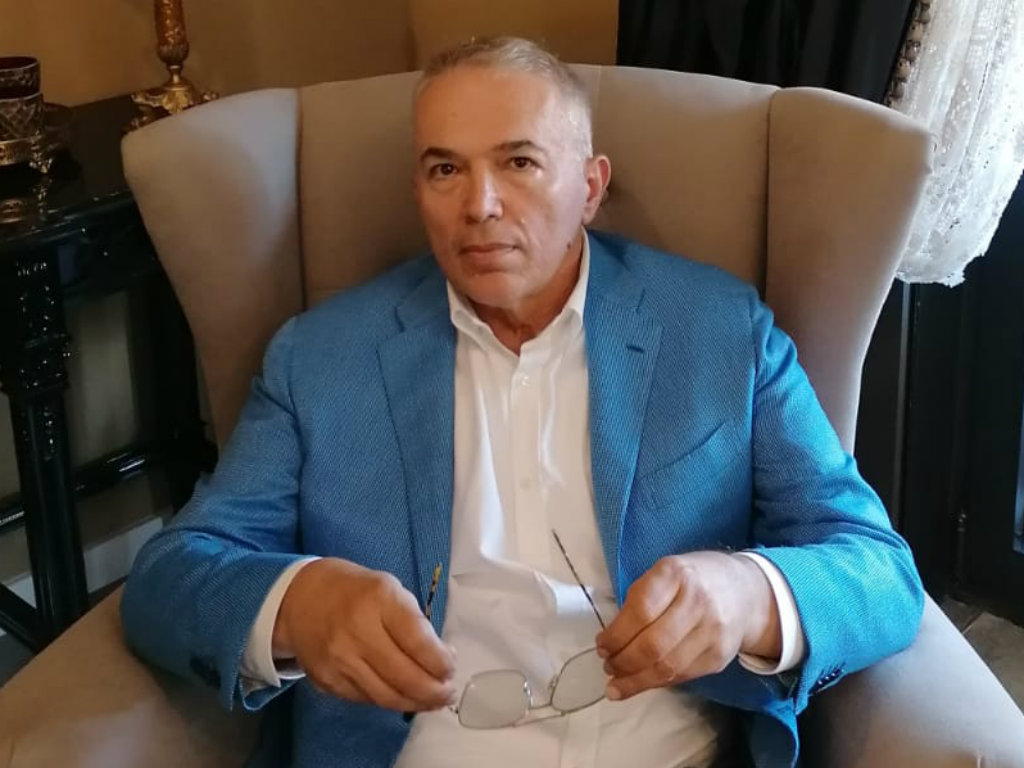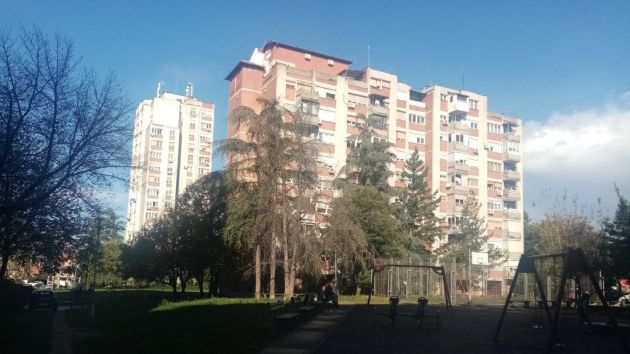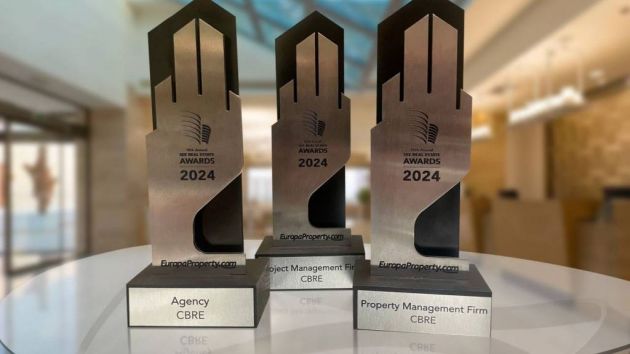Miodrag Skrbic, Founder of STROM Telecom – Another Era in TC Development in Central and Eastern Europe
 Wednesday, 07.10.2020.
Wednesday, 07.10.2020.
 13:33
13:33

STROM Telecom was founded in 1993 in Prague. In addition to Skrbic, the company was founded by his friends Nihad Hurem and Mirko Jelcic.
In his interview with eKapija, Skrbic attempted to recall and present us, in brief, some of his experiences and the successes he realized with STROM Telecom in the period between its founding to the handing over of the ownership to the Russian holding AFK Sistema.
What was the main reason for the founding of STROM Telecom?
– The main reason for the founding of a new company was to combine new ideas, software technologies that originated in our company NED Electronic GmbH and the large experience in the production of electronic equipment that the Tesla Votice factory had at the time. The Tesla Votice factory, which later became fully owned by us, was a good basis for the production of the hardware equipment for the new company, which we wanted to upgrade, modernize and connect with the new software platforms we were developing in line with our new ideas.
A major breakthrough for STROM Telecom happened in 1995 when the company, through our efforts and with the help of former Tesla associates and subcontractors, became a supplier for the Russian MGTS (Moscow City Phone Network). This was followed by us winning at tenders and getting orders, of which I would like to highlight the delivery of primary multiplexers for MGTS, which enabled the transferring of analog city stations to the digital network. The tender opened in late 1997 and took around four months. Eight companies which produced equipment for communications systems, including an experimental facility for scientific instruments of the Russian Academy of Sciences, took part. STROM Telecom won at this tender as part of a consortium with the Russian telecommunications company AMT. The delivery of the equipment began in the first months of 1998. A total of 4,000 multiplexers began in the first months of 1998. Thanks to them, over 3 million subscribers were able to switch from the analog phone network to the digital one (around 300 automatic phone centrals) in 1998.
Parallel with this, our main creative work and development of new software solutions took place in STROM Telecom's offices in Prague. STROM Telecom paid special attention to implementing new technologies. More than 60% of the company's employees worked on developing new solutions. The company actively cooperated with various universities, such as the Czech Technical University in Prague, Russian universities in Saint Petersburg and the research center at the Novosibirsk State University.
What was the idea that guided you especially at the time?
– The most popular word among the software development experts at STROM Telecom was convergence. All engineers from various parts of the world which worked in development talked about convergence with great enthusiasm. Among other things, convergence enabled the connecting of mobile and landline phone systems, for various combinations of clients, for various mobile communications systems – subscription and prepaid and for splitting the payment of services for a single mobile phone.
For example, our system at the time enabled employers to split their mobile communications bills into a part to be compensated to the worker and another part that the employer pays. For example, the employer compensates for local calls and text messages, and the employee pays for international calls. STROM Telecom looked to implement new services as widely as possible. Using Tesla's engineering production technologies and its own software development, STROM Telecom started the production of a full range of products for TC operators.
Would you highlight a project or an experiment from that period?
– I could highlight the experiment with the German operator 01058, now Callax Telecom, which in 1999 became an experimental and then a production platform for STROM Telecom. The exploitation in Germany showed that the development of STROM Telecom was very relevant. The work of German telecoms was based on a variable tariff system. In Germany, subscribers were connected at the same time to several international operators and could choose the services of the operator that offers the best price. But at the time the operators were facing the problem of how to notify the subscribers about the changes in the prices for certain services. STROM Telecom engineers proposed and developed a special technology which enabled a subscriber to learn in a simple way how much a call would cost. In order to get this information, it was enough to dial the area code of the state to which the call was directed.
How did you promote the solutions you had developed?
– We had plenty to offer in the international ICT field and telecommunications and we regularly took part in important international fairs. At CeBIT in Hanover, we were present for nine years in a row, and I would like to highlight CeBIT 2005 and 2006. I would also like to mention CommunicsAsia in Singapore in 2006 and Telecom World 2003 in Geneva.
Telecom World 2003 in Geneva was interesting in that it, in a way, witnessed the changes that telecommunications went through in the early 2000s. At the time, at this fair, we represented the Czech Republic. That year, large world producers seemed to be avoiding tackling the technologies of the future, and the exhibits were dominated by medium-sized companies, a half of which exhibited at the fair for the first time. The global mobile phone market was mostly moving to the third world countries and grew there at a great pace, whereas, in developed countries, this market was practically saturated. Europe mostly relied on third-generation mobile networks (UMTS), expecting the market to recover. At this fair, STROM Telecom signed the agreement on the delivery of its digital commutation systems for Callax Telecom Holding, which operated in the American market as well, in addition to the German market.
For example, in 2005, STROM Telecom, as a producer of modern telecommunications equipment, information systems and technologies, presented its solution for next generation networks (NGN) at CeBIT in Hanover. The first user, at which the entire new solution was tested that autumn, was MGTS, as one of the ten largest landline TC operators in the world. Even before the Hanover fair, STROM Telecom installed two test hubs of NGN solutions for special services, which enabled urgent calls or a large capacity call center.

– Each year, Czech exporters are organizing a traditional contest where they can compare their successes in the export of their products and services. In 2005 and 2006, STROM Telecom participated and in 2006 it placed first, far ahead of the competition, for the record increase of exports between 2003 and 2005, whereas in 2005 it took the high fourth position for the increase of exports in the 2003-2004 period.
Also, STROM Telecom, as a producer of TC equipment, information systems and technologies, was in the top ten on the TOP 100 list of ICT companies operating in said field in the Czech Republic. The list was made in cooperation with the Computerworld weekly and the Czech association Top 100 as a partner of the project.
How were you treated by international associations in the field of telecommunications?
– TC associations, the competition and the customers themselves respected us. STROM Telecom was the first technological company from the Czech Republic which became an associate member of the GSMA association. The decree confirming the status was handed over to representatives of STROM Telecom at a ceremony held on September 26, 2005, in Singapore.
At the time, how much did you invest in the development of the company?
– In addition to our regular investments in bringing the best engineers to the teams for development and the equipment for new technologies, which had been regular since the founding of the company, I would highlight the investment of half a billion Czech korunas in the renovation of the production facility of former Tesla Votice, which was completed in mid-2006. After the renovation, the modernized production line first started a mass production of hardware for a new system called TENNET for the simultaneous transfer of voice, data and services with various contents, which were specially charged. TENNET, as one of the first systems developed on the advanced TCA architecture, enabled TC operators to build and manage convergent networks, enabling the so-called three-way transfer, that is, voice, internet and television or video on the same infrastructure.
TENNET was also previously exhibited and presented at the CeBIT fair in Hanover in 2006 and at CommunicAsia in Singapore 2006. I would like to note that, that year, immediately after the Singapore fair, we founded a STROM Telecom branch office in Kuala Lumpur.
Could you recall some other projects that were especially interesting?
– I'd first like to mention a project which was interesting in that the scale of modernization it brought was unique even on global levels. Intending to start providing convergent services, MGTS decided to build a NGN in Moscow.
The level of digitization of the MGTS network was considered at the time to be one of the lowest in Russia, although it was the biggest landline phone operator. However, the operator actively upgraded its network. MGTS planned at the time to invest around a billion American dollars in the program of upgrading the network, the implementation of which started in 2004. It was slated to be completed in 2012. As the result of the tender, MGTS chose the equipment of the Czech company STROM Telecom, the German company Siemens and the Chinese company Huawei. In 2007, nearly 350 thousand subscribers in Moscow were able to use the services provided based on NGN.
The second project I'd like to highlight was interesting because STROM Telecom, in implementing a system for Vodafone, used and combined the experiences of its implemented solutions for the largest Russian mobile operator MTS, which served 36 million users at the time, and the then biggest German landline phone operator, Callax Telecom.
In early 2007, STROM Telecom signed a three-year agreement with Vodafone Czech Republic on the delivery of an information system for supporting business and operating processes. The solution used, Foris OSS/BSS provided Vodafone users and subscribers to create their individual tariff plans. Furthermore, Vodafone was enabled to provide practically any combination of tariffs and special offers adapted to various criteria in line with the users' needs.
This solution strengthened Vodafone's charging system, user relations management and increased the capacity of the orders, enabling it to offer new services much faster and expand its offer. At the same time, it was a step toward Vodafone's strategic goal, which was to launch all-encompassing services for corporate buyers. The solution also involved integration with other companies' products. STROM Telecom also delivered subsystems focused on charging end users and charging for services between TC operators.
The whole Foris OSS/BSS solution was in line with the international eTOM standards for business processes in the TC industry.
In February 2007, STROM Telecom, together with SITRIONICS TS Holding (a part of AFK Sistema) successfully listed on the London Stock Exchange. The listing was a special experience and a topic in itself.
 Nites d.o.o. Beograd
Nites d.o.o. Beograd
Top priÄŤe
22.04.2024. | Saobraćaj
City of Belgrade selling garages – Initial price EUR 7,000
The City of Belgrade has advertised the sale of publicly owned real estate, and these are garage spaces at 18A Salvadora Aljendea Street. The offer consists of 12 garages, with 14 m2 each, at an initial price of EUR 7,000 each. Bids may be submitted by April 30, and more details (in Serbian) can be found HERE.

16.04.2024. | News
Economy Fair in Mostar opens – 26 companies from Serbia exhibiting
16.04.2024. | News

22.04.2024. | News
German retail chain Mix Markt to open first stores in Serbia in three locations on April 29
22.04.2024. | News

21.04.2024. | News
Agreement with IMF to be extended by at least another two years
21.04.2024. | News

21.04.2024. | News
Where in Belgrade can an apartment be bought for around EUR 2,000 per square meter?
21.04.2024. | News
eKapija+

22.04.2024. | Saobraćaj, Finansije
Transfera presents business results: Successful business year 2023
22.04.2024. | Saobraćaj, Finansije

18.04.2024. | News
CBRE confirmed its leadership position with Hat-Trick at the 19th SEE Real Estate Awards
18.04.2024. | News

18.04.2024. | News
Consensual termination of employment relationship – News in the court practice?
18.04.2024. | News

18.04.2024. | Građevina
New dimension of life in the part of Belgrade which is waking from sleep (PHOTO)
18.04.2024. | Građevina


 Izdanje BiH
Izdanje BiH Izdanje Srbija
Izdanje Srbija Serbia Edition
Serbia Edition Serbische Ausgabe
Serbische Ausgabe


 News
News







